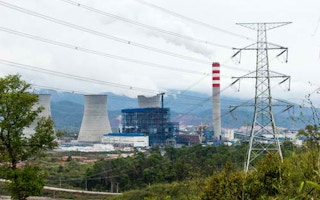A global carbon trading market could boost Southeast Asia’s efforts to combat climate change, the Asian Development Bank said on Monday.
The region had the fastest growth in carbon dioxide emissions in the world from 1990 to 2010, and will continue to rely mainly on coal-fired plants for its power needs, making it one of the top contributors to global greenhouse gas emissions, the ADB said in a report.
Southeast Asia’s five largest economies - Indonesia, Malaysia, the Philippines, Thailand, and Vietnam - account for 90 per cent of the region’s emissions, the Manila-based development bank said in the report, which comes in the wake of a landmark international agreement on fighting climate change reached in Paris in December.
“A global market greenhouse gas emissions could benefit countries in the region, as Southeast Asia is a net exporter of emissions allowances,” the report said.
“Naturally the most efficient way to achieve mitigation is generally to have a carbon market,” added David Raitzer, an economist who led the ADB study team that produced the report.
A global carbon market has remained elusive, but schemes in places such as Europe and China have been gathering momentum.
Under cap-and-trade schemes, companies or countries face a carbon limit. If they exceed the limit they can buy allowances from others.
The ADB also reiterated that the region’s GDP could decline by up to 11 per cent by 2100 if no steps are taken to curb climate change. That was up from a 2009 report, which put the decline at 7 per cent.
Meanwhile, Raitzer said that countries in the region would need to push harder to comply with the deal forged in Paris to rein in rising global temperatures to “well below” 2 degrees Celsius (3.6 degrees Fahrenheit) above pre-industrial levels, a mark scientists fear could be a tipping point for the climate.
“Basically that means you would have minimal deforestation by 2030. It also means that you need to have a much faster rate of energy efficiency improvements, a rate that’s double what is targetted in the energy sector plans for countries in the region,” he said.










